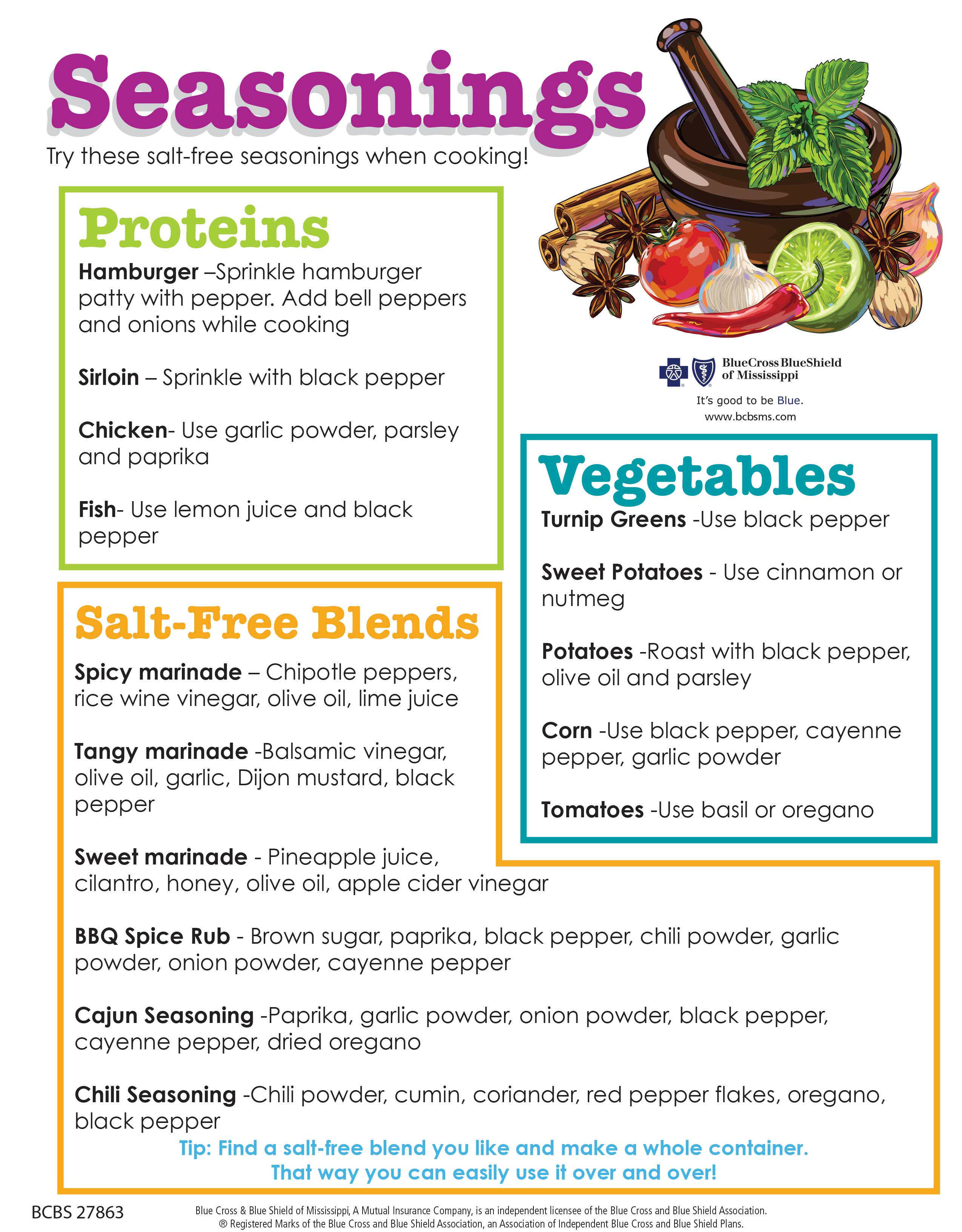The Season of Flavor
It’s no secret that too much salt can wreak havoc on your body! But many times, we continue to pass the salt shaker – not because our food is bland or tastes badly – we’ve just become accustomed to doing it or we don’t remember or recognize the true tastes of the foods we eat!
Americans consume well above the recommended daily sodium intake, with an average of 3,400 mg per day. But the average recommendation for sodium intake is 1,500 mg per day for those with high blood pressure to 2,300 mg per day for someone with normal blood pressure.
You may think the excess salt is coming from the old-fashioned table salt shaker – but it’s actually only about 10 percent. Most of it comes from the packaged, frozen and processed foods we eat like potato chips, frozen meals and restaurant and fast foods.
So, how can you reduce the amount of sodium in your diet? Here are some tips to help you lower your sodium intake!
Cook at home
Cook and prepare meals with fresh ingredients – think vegetables, fruits and whole grains and lean sources of protein. And beware of so-called healthy frozen meals. They may be low in calories, but some single-serving meals can have over 2,000 mg of sodium in one serving.
Read Nutrition Labels and Choose Lower Sodium Alternatives
- ½ cup canned diced tomatoes - 280 mg VS. ½ cup no salt added canned diced tomatoes – 30 mg
- ½ cup canned black beans – 480 mg VS. ½ cup reduced-sodium canned black beans – 240 mg. You can also buy dried beans for less than 10 mg of sodium per half cup when cooked. Whenever you buy canned beans or other canned vegetables, always thoroughly rinse them to further reduce the sodium content.
- ½ cup of rice mix (such as Rice A Roni) – 525 mg VS. ½ cup brown and wild rice – 3 mg
- 2 ounces deli turkey – 440 mg VS. 2 ounces reduced-sodium deli turkey – 350 mg
- ¼ cup salted mixed nuts – 100 mg VS. ¼ cup dry roasted unsalted nuts – 0 mg
- 1 ounce potato chips – 100 mg VS. 3 cups air-popped popcorn, 1 small piece fresh fruit or ½ cup fresh veggies – all under 10 mg per serving
- 2 tablespoons salad dressing from the store – 350 mg VS. 2 tablespoons homemade balsamic vinaigrette (1 T. olive oil, 1 T. balsamic vinegar, 1 t. part Dijon mustard, and freshly ground pepper to taste) – 115 mg
Use Herbs and Other Natural Flavors
Fresh and dried herbs, as well as other vegetables and juices can provide no or low-sodium flavors, including:
- Basil – pasta sauces, fish, chicken and lean meats
- Cumin – use in chili, chicken, ground meat or vegetables for dishes like tacos
- Chili powder – good for any dish to give a kick of flavor
- Rosemary – chicken, fish, other meats and potatoes
- Red pepper – can add heat to any dish or rubs, sauces and stews
- Cinnamon – can be used in sweet or savory dishes, including toast, yogurt, oatmeal and with fruit
- Oregano – good in tomato-based dishes, like Italian dishes (pizza, pasta, garlic bread).
Here are some other seasoning tips to help you cut excess sodium when cooking!





 Women's Health
Women's Health Eat Healthy
Eat Healthy Exercise
Exercise Health & Wellness Articles
Health & Wellness Articles